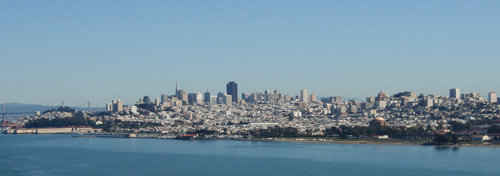International Symposium on Flame Retardants and Fire Safety (San Francisco)
After the first Symposium in Beijing, China, in November 2006, the Second International Symposium on Flame Retardants and Fire Safety, organised by the American Fire Safety Council AFSC, took place on October 7-10, 2007 in San Francisco, USA.
The topics covered were fire safety, innovations in flame retardant technology, and regulatory & environmental initiatives with speakers from the USA, Europe, and Asia (China and Korea). It gave an excellent overview on the latest developments in these fields.
The first session on fire safety started with new European trends for fire safety in building, transportation (motor vehicles, ships, rail), and electrical & electronic (E&E) equipment. It was followed by papers focussing on fire safety in the USA; particularly on the California home furnishings regulations and standards, automobile fire safety, and recent activities in US codes.
The second session on innovations in flame retardant (FR) technology started with new developments in halogenfree FR systems (silicones in PC/ABS, aluminium hydroxide coupling agents), followed by new phosphorus-based flame retardants (engineering plastics, electronic applications), research on nanocomposites, and sustainable brominated FRs (electronic applications, flexible polyurethane foam).
Finally, the third session on regulatory & environmental initiatives dealt with new developments in Europe, Japan, and the USA: FRs and REACH (registration, evaluation and authorisation of chemicals), Japanese perspective of environmentally friendly FRs, USA activities on FRs in printed circuit boards, on California's legislative and regulatory activities, and on VECAP, the voluntary emissions control action programme established by the brominated flame retardant industry.
One highlight of the conference was a keynote talk by Dr. Patrick Moore, former Director of Greenpeace International, about the importance of fire safety and how it fits into the larger sustainability picture. Towards the end of the conference, a small group of environmental activists (together with press people) "stormed" the meeting and fervently demanded the adoption of the Californian proposed legislation on a ban of halogenated flame retardants. The proposal was turned down by a small majority in the meantime.
The message from the symposium was that fire safety deficiencies are increasingly perceived (car and bus fires, external ignition sources in E&E), and that more stringent fire safety requirements are on their way in building (China for external insulation), transportation (high speed trains, ships & high speed craft), and home furnishings (USA mattresses). Innovations in flame retardants are scarce and focussed on halogen-free systems. Environmental initiatives have originated in Europe (risk assessments, REACH, VECAP) and are increasingly taken over by the USA and Asia.
